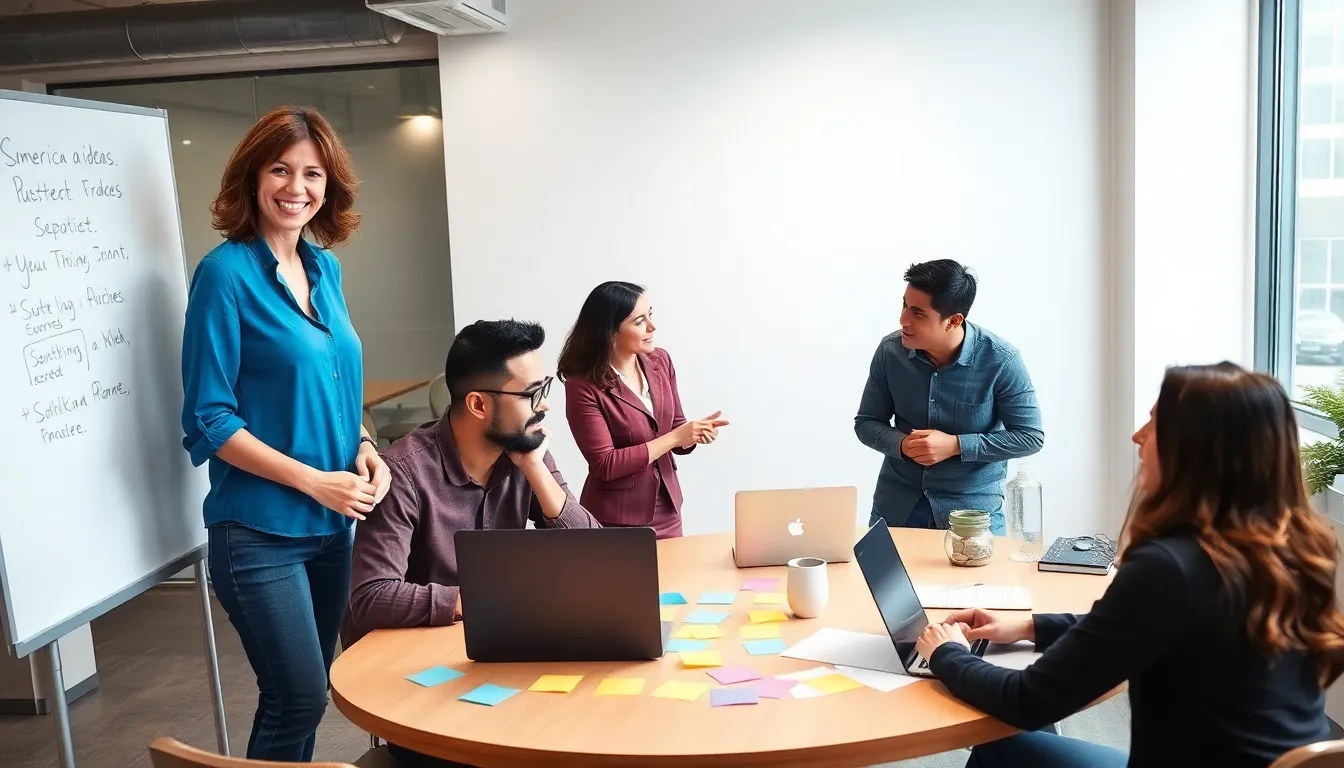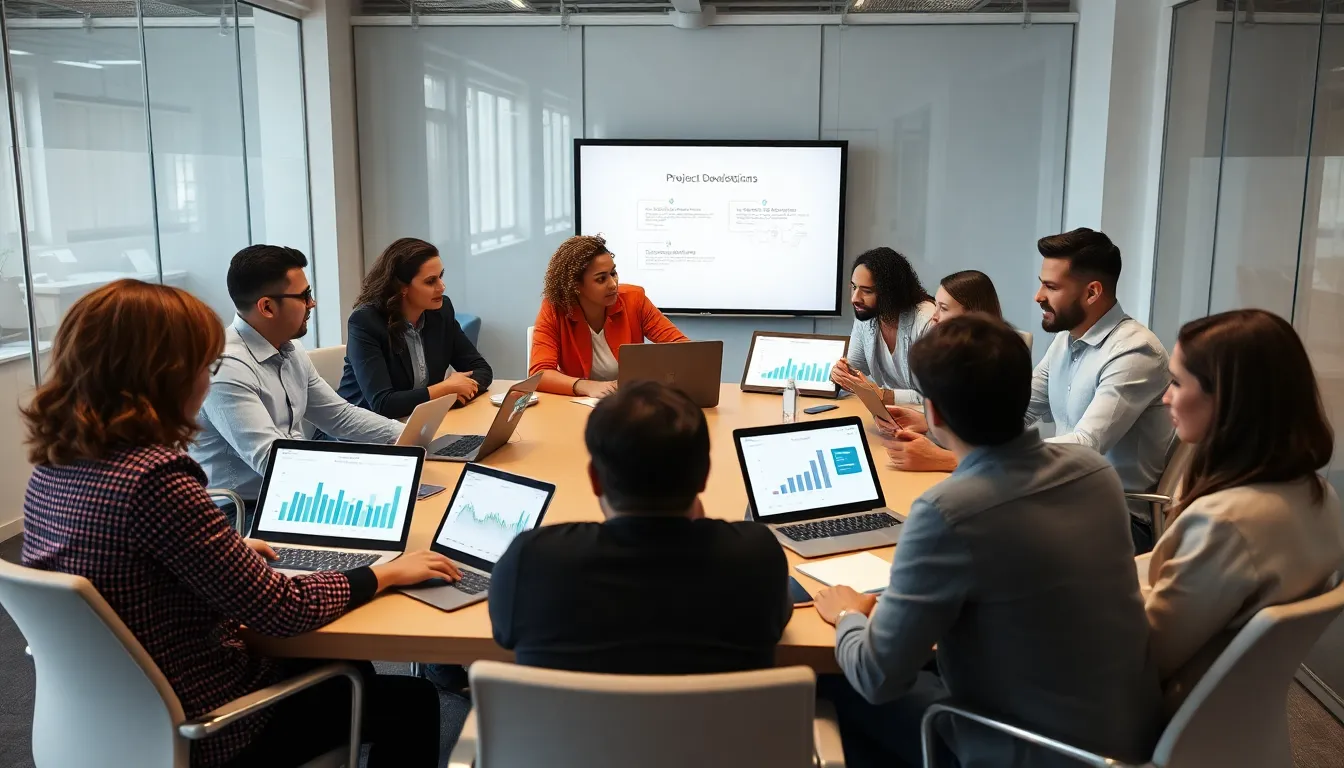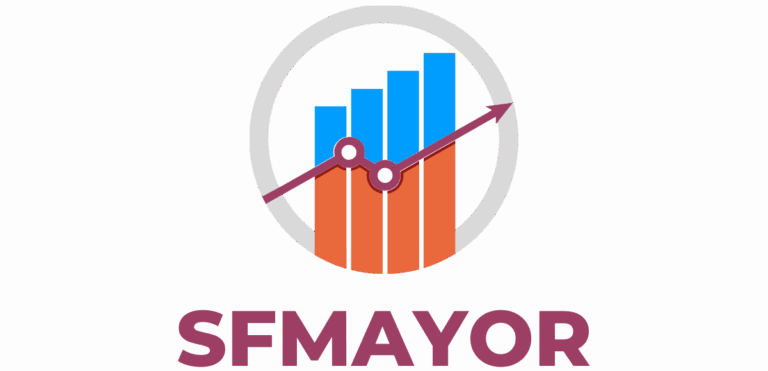In the wild world of teamwork, group dynamics can make or break a project faster than you can say “team-building retreat.” Whether it’s a boardroom full of suits or a casual gathering of friends, understanding how people interact is key. After all, nothing says “I’m a great leader” like knowing when to step back and let the quiet genius shine—or when to intervene before the coffee-fueled brainstorming session turns into a reality TV showdown.
From the quirky introvert who surprises everyone with brilliant ideas to the extrovert who thinks they’re the star of the show, group dynamics are a fascinating dance of personalities. Navigating this intricate web can lead to innovation and creativity, or it can feel like herding cats. Dive into the world of group dynamics and discover how to harness the unique strengths of each member for a more productive and harmonious experience.
Table of Contents
ToggleUnderstanding Group Dynamics
Understanding group dynamics plays a crucial role in how teams operate and succeed. The interactions among members influence their cooperation, decision-making, and problem-solving abilities.
Definition and Importance
Group dynamics refers to the behaviors, interactions, and psychological processes that occur within a team. This concept highlights how individual personalities and roles shape group performance. Recognizing these dynamics is essential for leaders, as they can either enhance or hinder productivity. Leaders who understand these processes can foster a supportive environment that encourages creativity. Additionally, awareness of group dynamics allows for effective conflict resolution, which leads to improved team cohesion.
Elements of Group Dynamics
Several elements contribute to group dynamics, including roles, norms, and communication patterns. Individual roles define responsibilities and expectations, guiding how members interact. Norms set the standards for behavior, establishing what is acceptable within the group. Effective communication is vital, as it promotes clarity and understanding among members. Acknowledging these factors fosters a healthier team environment, enhances collaboration, and drives innovation. Tailoring strategies to accommodate diverse personalities supports optimal group functioning, ensuring everyone can contribute their strengths.
Stages of Group Development

Understanding the stages of group development is vital for effective teamwork. Each stage influences interactions and overall group dynamics.
Forming
In the forming stage, team members meet and start to understand their roles. Goals and objectives become clearer as they set the foundation for future collaboration. Initial relationships form, fostering an atmosphere of trust. Individuals may feel excitement or anxiety, impacting how openly they communicate. This stage lasts until everyone feels comfortable with their roles.
Storming
Conflicts typically arise in the storming stage as different personalities clash. Team members begin to assert their opinions, leading to challenges in decision-making. Some may struggle for control while others hesitate to share their thoughts. This conflict is essential for growth, as it encourages team members to address underlying issues. Navigating this phase effectively can strengthen relationships and enhance group cohesion.
Norming
During the norming stage, team members reach consensus on rules and expectations. Collaboration improves as individuals develop mutual respect and understanding. Shared goals solidify group identity, enabling better communication. Members begin to support one another, fostering a sense of belonging. This stage is critical for reinforcing positive behaviors and addressing any lingering conflicts.
Performing
At the performing stage, the team operates at full capacity. Members confidently contribute unique skills and insights, leading to high productivity. Cohesion strengthens as collaboration becomes more natural. Problem-solving occurs efficiently, with the group focusing on achieving shared objectives. This stage represents the pinnacle of group dynamics, where creativity and synergy thrive.
Adjourning
The adjourning stage marks the conclusion of a group’s journey. Reflection on achievements and experiences occurs, allowing members to evaluate what they learned. Emotions may surface, as individuals acknowledge the relationships formed. It’s a time for closure, enabling team members to celebrate successes and discuss future opportunities. Transitioning smoothly from this stage encourages ongoing connections outside the team.
Factors Influencing Group Dynamics
Understanding the factors influencing group dynamics is essential for effective teamwork. Various elements contribute to how teams interact and function.
Leadership Styles
Effective leadership directly impacts group dynamics. Autocratic leaders may stifle creativity by making unilateral decisions. In contrast, democratic leaders encourage collaboration, allowing team members to voice their opinions. Transformational leaders inspire and motivate, fostering a culture of innovation. Consider participative leadership, which enhances engagement and shared responsibility, leading to increased satisfaction among team members. A leader’s approach shapes not only the atmosphere but also how individuals collaborate to achieve common goals.
Communication Patterns
Communication patterns play a crucial role in group dynamics. Open and transparent communication fosters trust among members. Team members who share ideas freely contribute to problem-solving and innovation. In contrast, unclear communication can lead to misunderstandings and conflict, hindering progress. Regular feedback enhances interactions, promoting continuous improvement within the team. Establishing clear channels for communication ensures that all voices are heard, supporting a collaborative environment where everyone feels valued.
Group Cohesion
Group cohesion significantly affects team performance. High levels of cohesion promote collaboration and support among team members. When individuals feel connected, they are more likely to contribute positively and take initiative. Trust builds through shared experiences and group successes. Conversely, low cohesion can lead to disengagement and dissatisfaction, which negatively impacts productivity. Engaging in team-building activities can strengthen ties and reinforce a sense of belonging, enhancing group cohesion and overall effectiveness.
Applications of Group Dynamics
Group dynamics play a critical role in various settings. Understanding these dynamics enhances performance and teamwork.
In Organizations
In organizations, group dynamics affect collaboration and productivity. Teams benefit from diverse personality types, as varying perspectives drive innovation. Leaders shape dynamics through their approach, adopting democratic styles to encourage participation. Effective communication fosters trust among team members. Engaging in team-building activities helps strengthen relationships, improving overall cohesion and performance. Organizations that leverage group dynamics often experience enhanced employee satisfaction and retention rates.
In Education
In educational environments, recognizing group dynamics is essential for effective learning. Teachers can facilitate interactions that promote engagement and collaboration among students. Group projects allow peers to share knowledge, encouraging diverse viewpoints. Clear guidelines and expectations build a supportive atmosphere. Additionally, understanding different learning styles aids in tailoring classroom activities. Educators who utilize group dynamics foster an inclusive environment that nurtures student growth and enhances academic outcomes.
In Therapy Settings
In therapy settings, group dynamics provide a supportive framework for healing. Participants often share personal experiences, cultivating empathy and connection. Therapists guide discussions, promoting open communication and trust. Groups that focus on shared challenges foster a sense of belonging and validation. Understanding interpersonal dynamics can lead to deeper insights and personal growth. Therapeutic groups that effectively address dynamics create safe environments, enhancing the healing process for all involved.
Understanding group dynamics is essential for fostering effective teamwork and enhancing overall performance. By recognizing the diverse personalities and interactions within a team, leaders can create an environment that promotes creativity and collaboration. Navigating the stages of group development allows teams to build trust and resolve conflicts, ultimately leading to higher productivity.
Effective communication and tailored leadership strategies are crucial in shaping positive group dynamics. Whether in organizations, educational settings, or therapeutic environments, the impact of group dynamics is profound. Emphasizing these elements can lead to stronger relationships and a more engaged and innovative team. Prioritizing group dynamics not only enhances performance but also supports personal growth and development.




